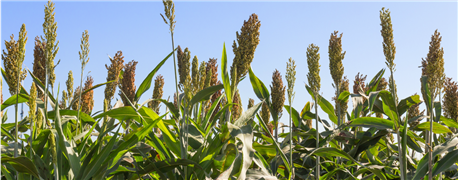May 19, 2016

Sustainability, from a farmer’s perspective, can be a very ambiguous consumer buzzword.
Carbon intensity is even more so. In this downturned farm economy, economic survival is higher on the priority list when selecting crops or production practices. However, while these two issues are very complicated and often misunderstood, both are important for farmers to understand.

What is the difference between the two? Carbon intensity is a measurement of the amount of carbon dioxide released during a process, for example sorghum production. Depending on the measurement framework used, this could be as simple as a tally of CO2 emissions associated with field operations or as complex as a wholesale accounting of every puff of CO2 that escapes from every factory, field or farmhouse that has anything to do with producing a crop or any of its inputs. Those spreadsheets can get pretty lengthy.
On the opposite side of the analytical spectrum is sustainability, which includes more than just carbon intensity. How much more? Again, it depends on the framework. To a farmer, sustainability conveys financial viability and maintaining a healthy environment for producing crops. To a food company, sustainability might mean an ingredient produced in a socially responsible manner or with a favorable environmental footprint like low water use.
Both carbon intensity and sustainability are hard to quantify in universal terms. So, why should farmers even pay attention?
These two measurements are far from non-issues. The best example of a system that rewards low CO2 emissions can be found in California, and it affects the majority of U.S. grain farmers. The Low Carbon Fuel Standard, or LCFS, designates greater monetary value to fuels with lower carbon intensities—notably in the nation’s largest fuel market. To illustrate, more than half of all U.S. ethanol plants have obtained the carbon intensity scores needed to sell ethanol into California.
Under the LCFS, CO2 emissions are measured by the Greenhouse Gases, Regulated Emissions and Energy Use in Transportation model. The GREET model includes a spreadsheet with 39 tabs and eight macros running in the background. Buried deep inside are values like average nitrogen application rates, the carbon intensity of harvest and even the methane emissions associated with center pivot tire production. Still think this is a non-issue?
Several ethanol plants in the Sorghum Belt rely heavily on the California market, and the LCFS is a distinct competitive advantage for these plants. This standard means plants can pay farmers more for their grain. The actual amount depends on hundreds of factors—including field-level production practices—but is often a dozen cents per bushel or more.
Both carbon intensity and sustainability continue to grow in importance. But rather than viewing these issues as threat, look for the opportunities available. Sorghum has an important role to play in this evaluation, and I look forward to sharing more information on these opportunities in the future.
Chris Cogburn writes from Abernathy, Texas. Follow him on Twitter @nspchris.
You May Also Like




